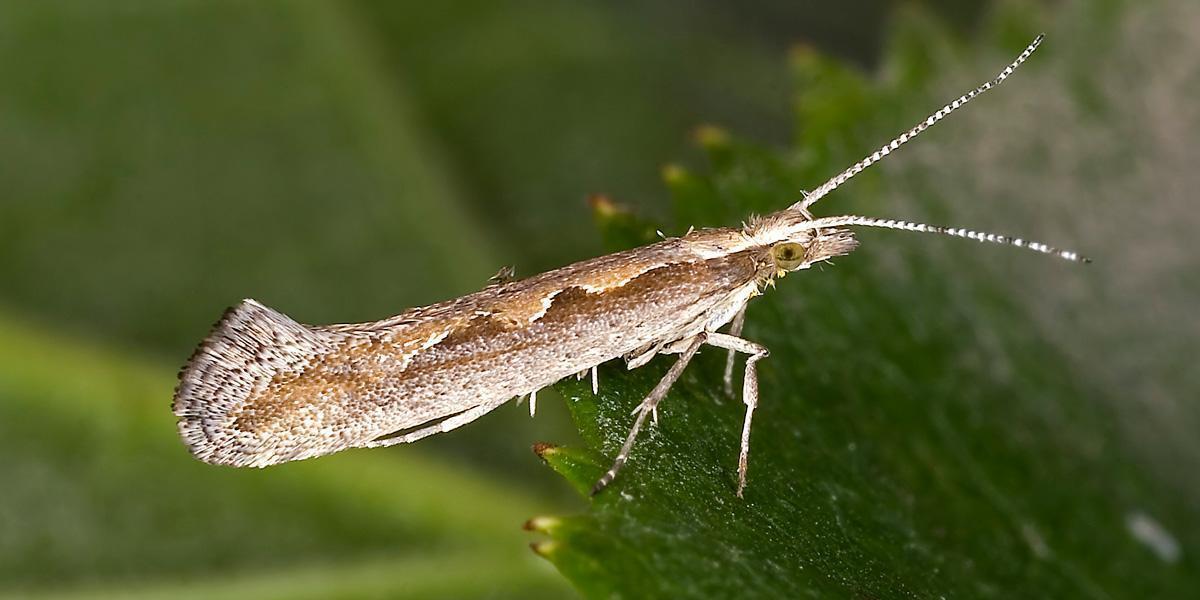
Will New York Become the First State to Allow Genetically Engineered Moths?

Although not on most people’s radar here, New York is one step closer to becoming the first state to have genetically modified, non-sterile insects released outside without cages.
Last week, the Animal and Plant Health Inspection Service of the United States Department of Agriculture (USDA-APHIS) ended the public comment period for its most recent environmental assessment of the proposed field release of a genetically engineered (GE) diamondback moth, an insect that causes serious damage to cruciferous crops such as broccoli and cauliflower. The release would be the first open-air trial in the U.S. of a GE agricultural pest created with a technology that doesn’t use sterility as a way to control population.
USDA’s assessment supports the permit application by Dr. Anthony Shelton of Cornell University and paves the way for trials that would take place on the New York State Agricultural Experiment Station in bucolic upstate New York. Although the comment period occurred in the middle of planting season, the USDA did not honor a request by Northeast Organic Farming Association of New York and Food & Water Watch for a 30-day extension to allow interested parties to properly assess the complex report. Northeast Organic Farming Association of New York Liana Hoodes described the lack of an extension as “unfortunate for the farmers of the region who may be significantly affected by these trials.”
If the permit is approved, Cornell will be able to release up to 30,000 GE moths per week for three to four months for up to two years. The modified moths are imported from Oxitec, Ltd., the same British company that engineers the Aedes aegypti mosquitoes, which is at the center of a fierce controversy in the Florida Keys.
Oxitec’s designer moth uses the same technology employed with their modified mosquitoes that have already been released in Brazil, Panama and the Cayman Islands. As in those programs, the male GE moth is not sterile but instead carries an engineered trait designed to kill most of its female offspring. However, although approximately 99 percent of the females will not survive to adulthood, many will die on the target crop, which raises concerns about ingestion of the tiny GE larvae by livestock, wildlife and humans if the process is eventually put into widespread use. In addition to this obvious ick factor, watchdog organizations have also questioned the use of tetracycline as the agent that switches off the lethality gene in the laboratory, citing antibiotic resistance among other issues.
This phase of the project follows closed cage trials that Cornell conducted in 2015. Critics of the open release proposal point out that data from those experiments have still not been published in a peer-reviewed journal. Consumer advocate groups—including the Center for Food Safety, Food & Water Watch, Northeast Organic Farming Association of New York, Consumers Union, GeneWatch UK and Friends of the Earth—have written to Cornell and asked for more details about the earlier trials.
“Doing this new environmental assessment without releasing previous data is irresponsible,” Jaydee Hanson, Center for Food Safety senior policy analyst, said.
On the last day to submit comments, the USDA had received nearly 600 responses to their assessment of the open release plan, the overwhelming majority of which were opposed to granting the permit. About 40 commenters—primarily academics and conventional farming and biotech industry representatives—expressed support. Among those who asked the USDA to reject the proposal, commenter Jessica Visconti of Paramus, New Jersey, made a very simple plea: “Do not do this,” she wrote.

 233k
233k  41k
41k  Subscribe
Subscribe 